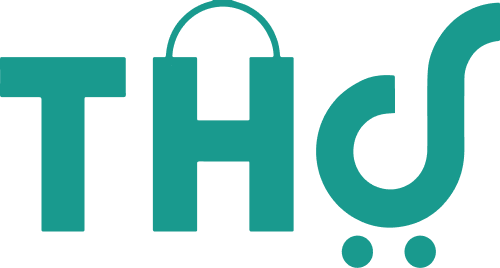Experts forecast that by 2023, more than 25% of healthcare consumer contacts would be carried out digitally outside of a traditional care environment, with the remaining 75% moving toward digitally synchronized real-time health systems.
Telemedicine is enabling new healthcare interactions and care delivery capabilities for consumers, patients, and members of the ecosystem that supports them as digital health enters its nascent stage.
The digital transformation of healthcare is pushing the limits of conventional healthcare models to promote more affordable care, improve access, deliver personalized and contextualized experiences, improve quality and health outcomes, and meet the consumer-patient-member where they are at with new products and channels of innovation. As one of the core elements of the digital era, telemedicine is the subject of this blog.
What is Telemedicine?
Telemedicine is referred to by the World Health Organisation (WHO) as “healing from a distance.”
It is the delivery of clinical services to patients remotely through the use of information and communication technologies. For the transmission of digital images, video consultations, and remote medical diagnostics, doctors use telemedicine.
People no longer need to make an appointment to see a doctor in person to receive treatment. Specialists can treat patients who live in areas with poor access to healthcare thanks to the deployment of secure video and voice communications.
There are 3 common types of telemedicine, which include but are not limited to:
Interactive Medicine
Interactive medicine, commonly referred to as “live telemedicine,” enables real-time communication between patients and doctors while still adhering to HIPAA regulations. Video conferences and phone consultations are both forms of communication. Using interactive medicine, doctors can examine a patient’s medical past, do psychological tests, and more.
Forward and Store
With this kind of telemedicine, healthcare professionals can communicate patient data with a doctor in another city or country. For instance, a primary care doctor and a specialist can now communicate virtually and exchange patient information and medical records. Systems are occasionally able to transfer information across great distances and between various systems, allowing one doctor to understand what another has already done. As a result, there are fewer cases of unnecessary testing and bad medication management.
Remote Patient Monitoring
Telemedicine enables doctors to check up on their patients in the comfort of their own homes, making it a popular choice among older patients who are staying put. Doctors can collect and exchange information with their patients through patient portals. Additionally, medical devices can convey vital signs and other information to clinicians so they can modify therapy as necessary.
Benefits of Telemedicine:
Increased efficiency:
Telemedicine is being used by healthcare organizations, doctor’s offices, and skilled nursing institutions to deliver care more effectively. Electronic medical records, AI diagnosis, and medical streaming devices are just a few examples of technologies that are built into telemedicine software and can help doctors diagnose and treat patients more effectively. The latter enables healthcare professionals to keep an eye on patients in real-time and modify treatment plans as required. This ultimately results in improved patient outcomes.
Increased revenue:
Increased revenue is also another benefit of Telemedicine. Physicians can see more patients thanks to telemedicine without having to hire more employees or expand their facilities. Experts in telemedicine, such as Total Health Solution, assist healthcare professionals in setting up HIPAA-compliant telemedicine solutions that will improve patient care and streamline processes.
Increased custom services for patients:
Patients who previously had restricted access to medical services can now see a doctor without leaving their homes thanks to telemedicine. Medical streaming technologies have made it possible to treat senior patients right from their homes. As people with contagious diseases do not have to expose themselves to others in congested waiting rooms, the spread of disease is decreased.
Consultations anywhere: Video consultations allow patients to avoid paying for petrol or losing time in traffic.
Consultation anytime: The ability to arrange a consultation during a work break or even after hours means people no longer have to miss any work.
Childcare/Eldercare Issues: Telemedicine solutions are available for people who are having trouble finding care options.

Telemedicine Growth and Future:
Presently, the vast majority of individuals have access to simple telemedicine tools like smartphones and PCs. People in remote places and crowded urban areas can easily connect with a provider because of better accessibility. Caregivers can track anything from vitals to glucose levels thanks to home-use medical equipment. Patients don’t need to enter a doctor’s office for doctors to make a diagnosis and acquire vital medical data.
There are many reasons to be hopeful for the future of telemedicine. With the speed at which technology is developing, telemedicine is probably just going to get cheaper and more popular in the years to come.
By 2020, telemedicine is expected to be a $35 billion industry and play a significant part in the provision of modern healthcare. How far we’ve come as evidenced by the evolution of telemedicine over time.
All the statistics indicate that telemedicine is expanding exponentially; in other words, it is here to stay. In 2014, the worldwide telemedicine market had a value of $17.8 billion, and by 2023, it is expected to reach even higher levels.
The groundwork for telemedicine is being laid out swiftly. But what do those who use telemedicine think about it? Are they willing to give it a try?
Conclusion:
Most people are interested in adopting telehealth services, according to recent surveys, especially after learning how telemedicine operates and what advantages it can have for them. According to data, 74% of US patients surveyed were receptive to using telemedicine services and felt comfortable corresponding with their doctors online. 67% stated they are at least slightly more satisfied with their medical care as a result of telemedicine.
Our platform, Total Health Solutions is consolidating, inventing, and accelerating technologies in the digital health sector. Our technology stack is both doctor & patient-friendly, ensuring better healthcare infrastructure in India!

